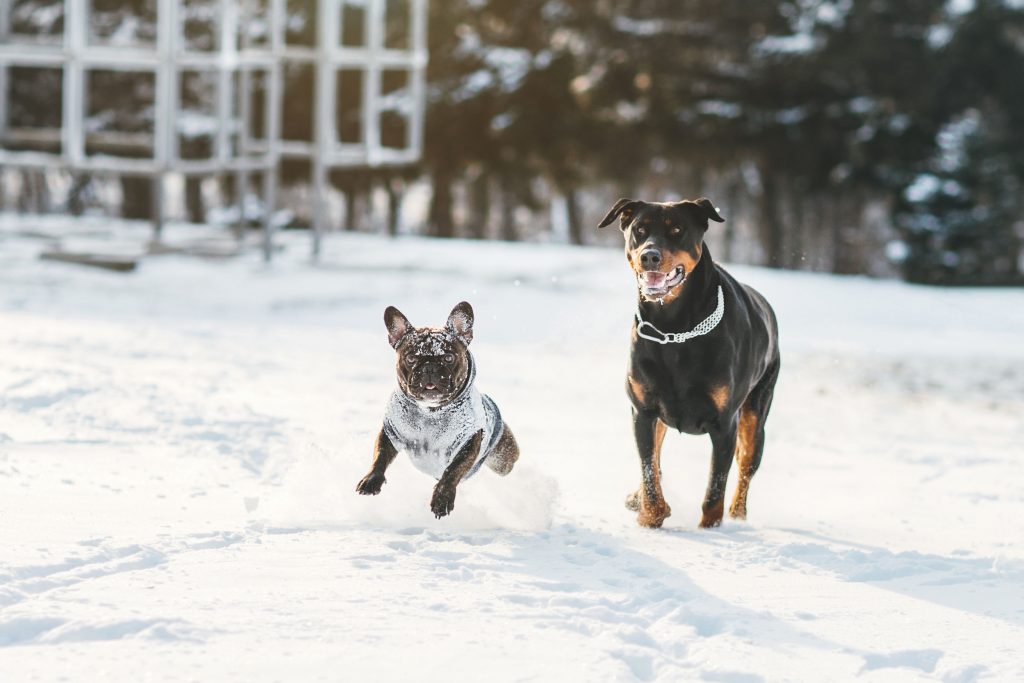
It may be only October, but if you look around, nature is beginning its preparation for winter. You’re probably thinking about winter, too: Planning to get the gutters cleaned, the furnaced checked, and the snowblower unburied from the shed and tuned up.
You should also think about your pet’s needs before winter arrives. Winter can be hard on your animal, too, whether it is an inside pet or outside. The veterinary experts at Purdue’s College of Veterinary Medicine have eight tips to keeping your furry friend happy and healthy this winter.
- Be sure to wipe your dog’s paws to remove any salt or deicer after it goes outdoors. Salt and ice can cause trauma to pads. Also, deicer is toxic to the
kidneys and causes renal failure. Another way to protect the paws is to put booties on your dog when it goes outside. - Pets can easily get frostbite on their extremities, such as their ears, legs and tail. Try to control the amount of time your pet stays outside and use booties to prevent frostbite to the feet. Although some pets are conditioned to cold weather, veterinary experts agree that you should bring outdoor pets indoors if the temperature drops below 20 F. Puppies, kittens and short-haired pets should come inside anytime the temperature goes below 40.
- To encourage your dog to eliminate outdoors when there is snow on the ground, clear a small path on your lawn.
- Cats seek places where it is warm. Make sure outdoor cats are not sleeping in warm car engines. If you park outside, be sure to pound on the hood of your car prior to starting it.
- Decrease frequency of baths so you don’t dry out your pet’s skin. Also, use a moisturizing shampoo to combat dryness. Your veterinarian can recommend shampoos to use during winter months. For pets with long hair, proper grooming is essential to help them maintain a layer of warming air within their coat.
- Smaller dogs would benefit from using a sweater or coat when going outside to help retain body heat.
- Pets should not be left alone in vehicles due to the potential for carbon monoxide poisoning or hypothermia.
- If your pet must stay outdoors, be sure to provide a warm shelter. A good “house” will have three enclosed sides, will be elevated off the ground, and will contain generous amounts of bedding such as straw or hay. Do not use old carpet or blankets on the floor that can retain moisture — and freeze — unless you check them daily and replace them when wet. Make sure the roof doesn’t leak and that the siding is as tight as possible to reduce drafts. If you build your pet’s shelter, adding an inner wall with even a thin layer of Styrofoam insulation between it and the outside siding will add to your pet’s comfort for little cost.



